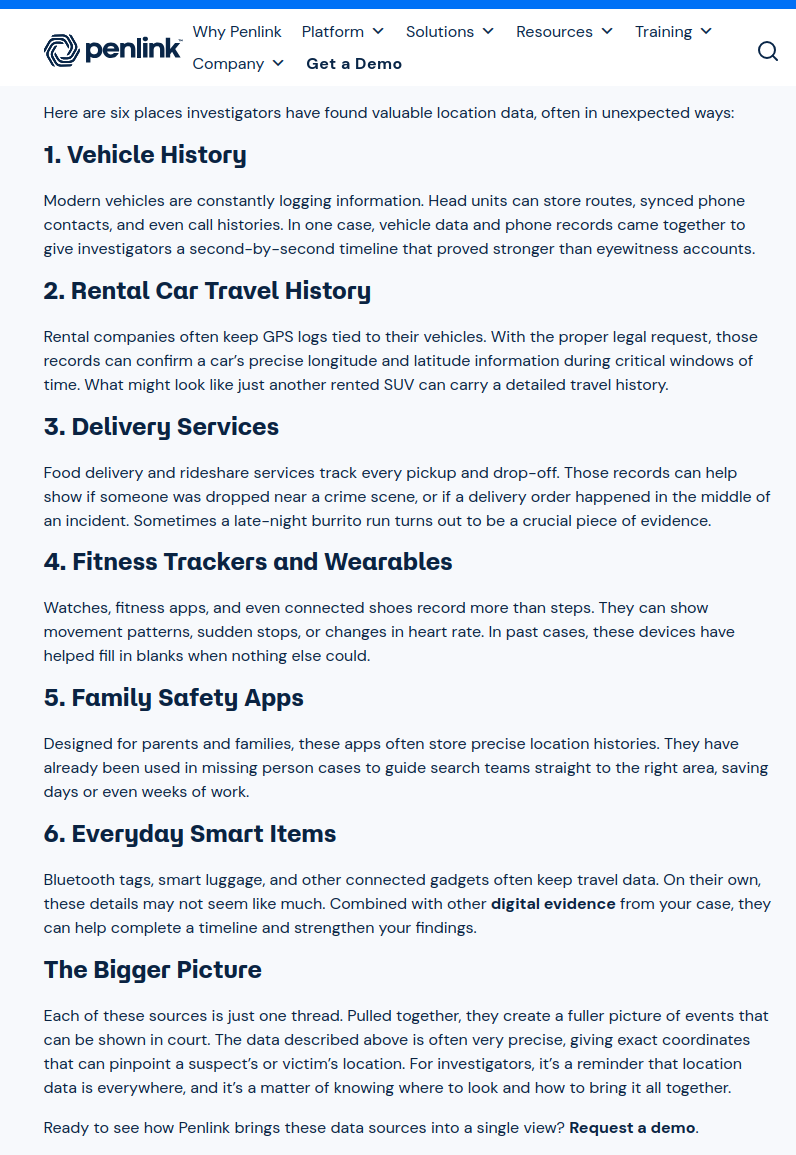ICE is buying location data from smartphone apps, etc.
How can your movements be tracked?
The Penlink surveillance company counts some of the ways:
Penlink was brought to our attention by a report from Joseph Cox in 404 Media that the Immigration and Customs Enforcement (ICE) division of the US Department of Homeland security (DHS) is entering into a contract with Penlink as a unique and irreplaceable source of aggregated location data from smartphone apps and other sources.
According to an ICE document justifying the no-bid single-source contract that was uncovered by 404 Media, Penlink is the only company that can “compile, process, and validate billions of daily location signals from hundreds of millions of mobile devices, providing both forensic and predictive analytics”, and that is willing to sell ICE access to this data.
Penlink also extracts and makes available to its subscribers, in real-time, location data embedded in EXIF metadata in smartphone photos uploaded to Facebook and other social media, and boasts of its ability to aggregate location data from many other sources.
How does Penlink get this data, in order to be able to sell it to ICE?
Most people didn’t (and wouldn’t) knowingly consent to having this information sent to and used by the government, and wouldn’t think of this information as “open source”. How many people even realize that, by default, each smartphone photo contains precise location information included within the image file?
Most people would consider an app that collects timestamped location tracking data and sends it to a company that sells it to the police to be “malware”.
Almost all of these apps with embedded surveillance malware are distributed — in most cases, distributed exclusively — through the Google Play Store or the Apple App Store.
To put it another way, the Google Play Store and the Apple App Store are the primary distribution channels for malware people install on their smartphones that enable government surveillance.
